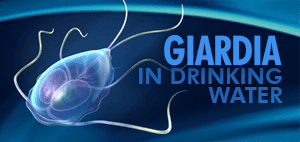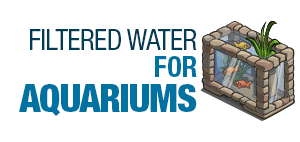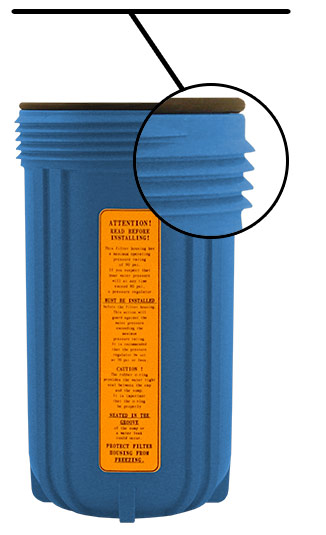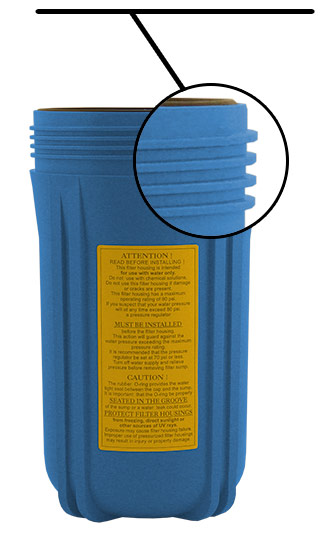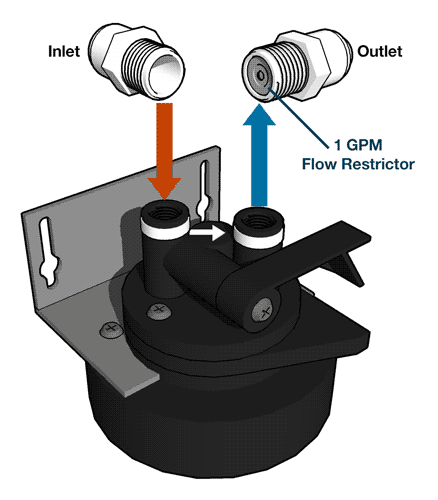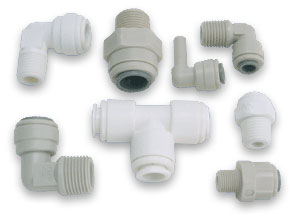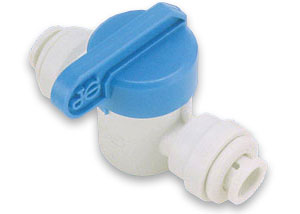What is Fluoride and Why Is It In My Water?
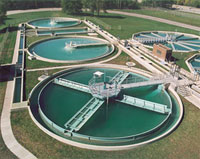 Fluoride is a reduced form of the chemical element Fluorine. Fluoride can occur naturally in water supplies from insignificant amounts to dangerously high concentrations. Since the discovery of its health benefits in the mid-1940’s, fluoride is often added to the public water supplies of industrialized countries in order to reduce the populations tooth decay, which is especially effective in low income communities, where good dental hygiene may be too costly.
Fluoride is a reduced form of the chemical element Fluorine. Fluoride can occur naturally in water supplies from insignificant amounts to dangerously high concentrations. Since the discovery of its health benefits in the mid-1940’s, fluoride is often added to the public water supplies of industrialized countries in order to reduce the populations tooth decay, which is especially effective in low income communities, where good dental hygiene may be too costly.
A lot of controversy surrounds water fluoridation and its benefits versus possible adverse health effects. Several industrialized nations have stopped artificial water fluoridation, usually because of political opposition or alternative ways of fluoridation. Since the 1970’s these countries have stopped water fluoridation; Germany, Sweden, Netherlands, the former Soviet Union, Czechoslovakia, Finland and Japan. In some areas fluoridation is a complex and expensive process, especially in under-developed countries.
What are the Health Effects of Fluoride Exposure?
Dental fluorosis is the most immediate effect of water fluoridation. Fluorosis is a disease which mostly effects children 8 years old or younger, during tooth development. Fluorosis is not a public health concern and only really affects teeth cosmetically, leaving white streaks or dots on the enamel of a tooth. However the effect of prolonged fluoride consumption on human populations is still being studied by the World Health Organization (WHO) and the Centers for Disease Control (CDC).
Consumption of fluoride above the WHO’s concentration guidelines has more drastic effects, such as sever tooth and skeletal fluorosis, which can cause brittle bones/teeth, joint impairment and possible damage to the thyroid gland. Opposition to water fluoridation have claimed it increases the risk of bone cancer, although this is still being studied. Opponents also claim moral and human rights violations, due to it being an involuntary ‘mass medication’ and that consumption of fluoride is not controlled depending on the individual. This means that children, people who perspire heavily, people with kidney problems and other impairments have a greater intake than the average population.
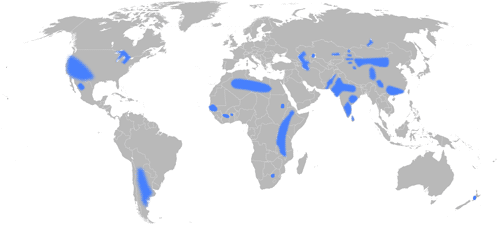
World map of Groundwater Fluoride Concentrations Above 1.5 mg/L Recommended Limit
A 2012 Harvard Meta-analysis of 27 different Fluoride studies found that children who live in areas with highly fluoridated water test with significantly lower IQ scores than children living in areas with lower fluoridation in their water. This suggests that Fluoride may be a developmental neurotoxin which can effect brain development at exposures well below that which can cause toxicity in adults. These studies are not conclusive so more research into Fluorides affects is needed.
Fluoride Removal From Drinking Water
Reverse Osmosis is the best way to remove fluoride from drinking water. Thin Film Composite Reverse Osmosis Membranes remove between 85-92% of Fluoride.
Aries Filter Works Fluoride reduction cartridges contain Resintech SIR-900, in which fluoride is removed by a chemical reaction with the media. The process is flow and pH sensitive. The best results are obtained when the flow is limited to about l GPM/cu.ft. and the pH is held at 5.5. Higher flows and higher or lower pH causes a significant loss of capacity. The best capacity obtainable is approximately 0.2 lbs. per cu.ft. Leakage of fluoride is generally less than 0.1 mg./L to breakthrough.
Reverse Osmosis Water Filters Under Sink Water Filters (UCF Models Only) Aries Filter Works Fluoride Reduction Cartridges
NSF 53, 58 or
62 Certified
From NSF.org
NSF/ANSI Standard 53: Drinking Water Treatment Units – Health Effects
Overview: Standard 53 addresses point-of-use (POU) and point-of-entry (POE) systems designed to reduce specific health-related contaminants, such as Cryptosporidium, Giardia, lead, volatile organic chemicals (VOCs), MTBE (methyl tertiary-butyl ether), that may be present in public or private drinking water.
NSF/ANSI Standard 58: Reverse Osmosis Drinking Water Treatment Systems
Overview: This standard was developed for point-of-use (POU) reverse osmosis (RO) treatment systems. These systems typically consist of a pre-filter, RO membrane, and post-filter. Standard 58 includes contaminant reduction claims commonly treated using RO, including fluoride, hexavalent and trivalent chromium, total dissolved solids, nitrates, etc. that may be present in public or private drinking water.
NSF/ANSI Standard 62: Drinking Water Distillation Systems
Overview: Standard 62 covers distillation systems designed to reduce specific contaminants, including total arsenic, chromium, mercury, nitrate/nitrite, and microorganisms from public and private water supplies.
Sources of Information on Fluoride
- CDC – Water Fluoridation
- EPA – Fluoride in Drinking Water
- Wikipedia – Water Fluoridation
- Wikipedia – Water Fluoridation Controversy
The foregoing information was compiled from the the links listed above.










